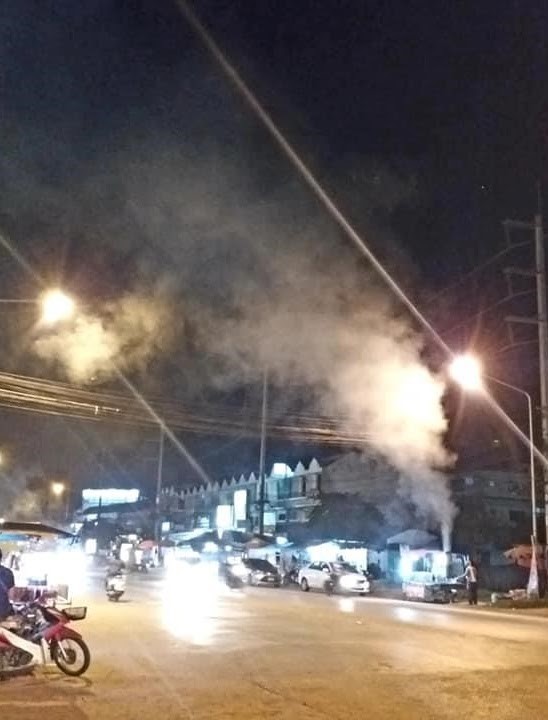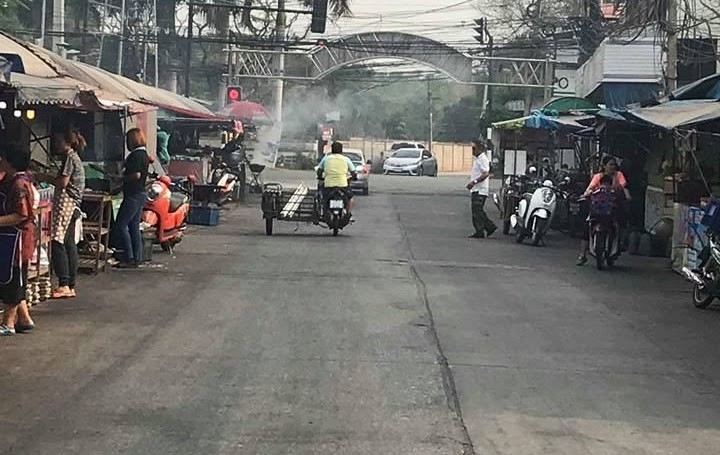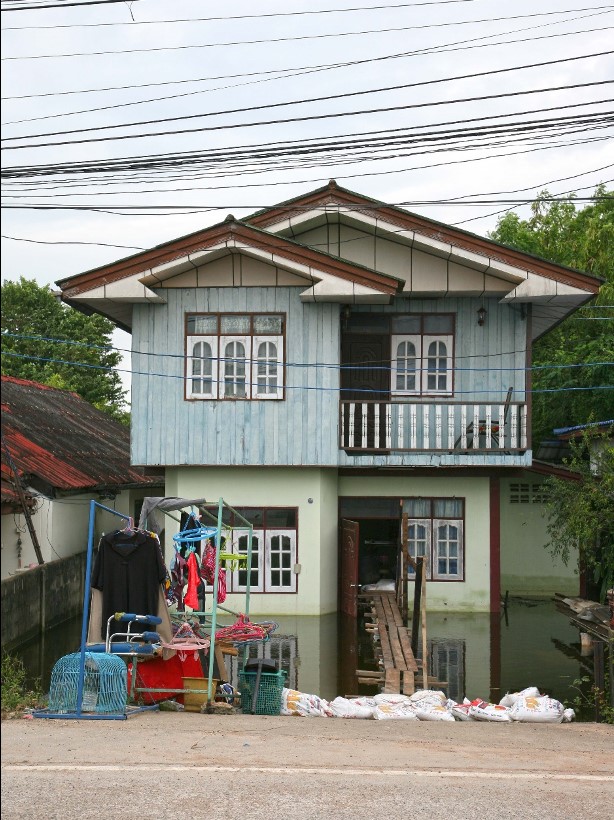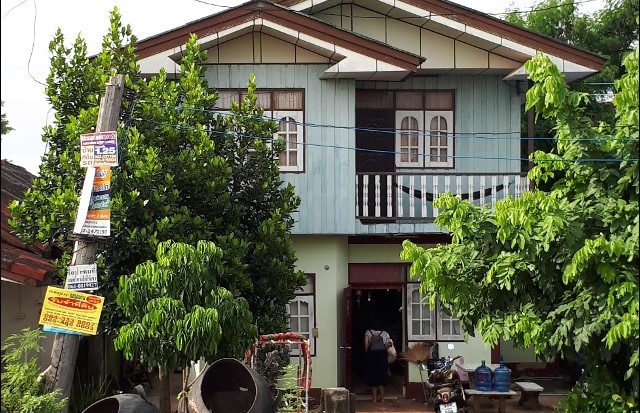
Smoke from the street food vendor

5 Yak Market, high density of street vendors in the Mahasarakham City
|
PM pollution at Maha Sarakham city
Less than 2.5 micrometers (PM2.5) and 10 micrometers (PM10) airborne particulate in diameter has become an air pollution problem in many large cities i.e., Bangkok, Chaing Mai and Khon Kaen. To our knowledge, there is less information on PM pollution at Maha Sarakham city. To achieve better understanding as to how PM plays an important role on human health in this area, we developed a PM emission inventory in 2011 with the major source. Measuring on-road PM2.5 over 17 local communities by using AirBeam, the average PM2.5 levels in the morning was higher than in the evening. Moreover, the average during the weekday was higher than in the weekend. The most possible potential emission sources are vehicular emission (fuel combustion), meat grilling, and biomass open burning. Based on health risk, assessment using 6-hr average (rush hours), hazard quotient (HQ) was the acceptable level exposure to PM2.5. However, continuous health surveillance of particulate air pollution is still required for the city. More investigations on PM sources focused on street venders (grilling meal) with the previous study will be carried out. The fuel used for grilling meal is charcoal. The results from screening the health risks from PM2.5 of seven street venders located in densely populated residential areas using AirBeam data (only during the time of grilling) showed that the hazard quotient of all the street venders is acceptable. However, as of the past 5 years (2014-2018), there was an average rate PM2.5 related pollution of 52.2 cases/year. It was found that the population density, house ventilation and PM2.5 levels are significant factors that correlate to the number of TB patients. Furthermore, at Uthaitit temple, incense wood burning caused a health risk from PM. Long-range transports of PM, that land use (i.e., rice paddy field and sugarcane), and a number of factories/mills significantly correlated with the number of fire hotspots, which caused haze spreading to the city during March 11-15, 2019.
Dr. Thayukorn Prabamroong
Interview Link: xxxxxx (3 mins) |

Picture taken on June, Flooding in Pralab sub–district during October – December 2017
(Picture taken by Miss. Astrud Lea Beringer)

Picture taken on November, Flooding in Pralab sub–district during October – December 2017
(Picture taken by Miss. Astrud Lea Beringer)
|
Flash Flooding at Khon Kaen
Have you wonder why urban areas in Thailand often face flash flooding? It is a combination of factors and one of them is climate change! There is a real example in Khon Kaen city (KKC) where my team has studied cause and consequences of climate change to this city. Khon Kaen is a secondary city in Thailand located in the northeastern region as a development hub. Recently, rapidly unregulated development and climate change has been creating new environmental, socioeconomic, and health risks. Over the past twenty years, unplanned urbanization in KKC has contributed to increased flooding and livelihood vulnerability of both urban and sub-urban civilians. Its growth has exceeded the local capacity to manage it, especially in the absence of up-to-date land-use regulations. The resulting unplanned development has altered physical infrastructure and natural waterways, and reduced important ecological buffers, such as rainwater receiving areas, green space, and pervious (penetrable) surfaces that absorb water and thus prevent flooding. Climate change is interacting with these changes to make cities even more vulnerable to risk. Flash floods in urban centers and seasonal flooding in downstream sub-urban communities have become common disaster events in this city and other secondary cities in Thailand.
Dr. Jutamas Kaewsuk
Interview Link: xxxxxx (4 min)
|